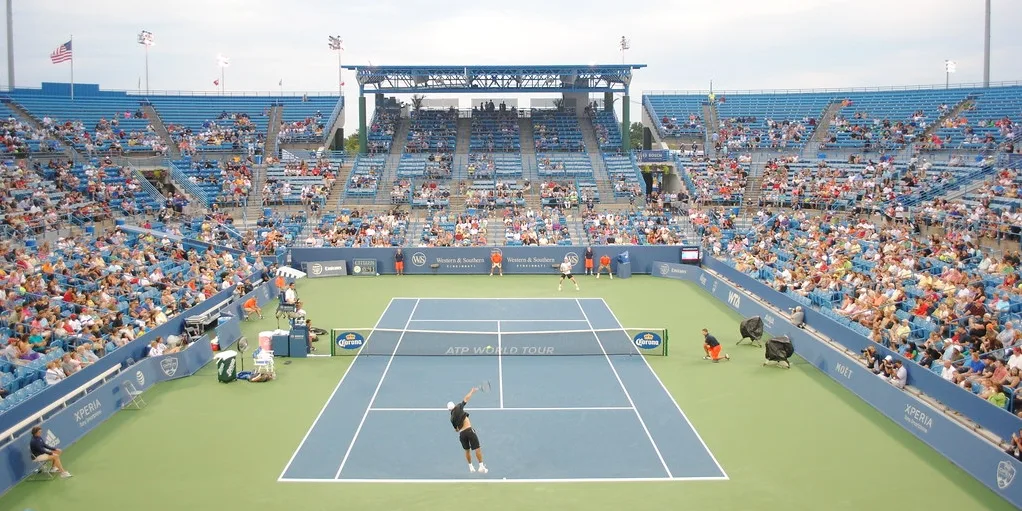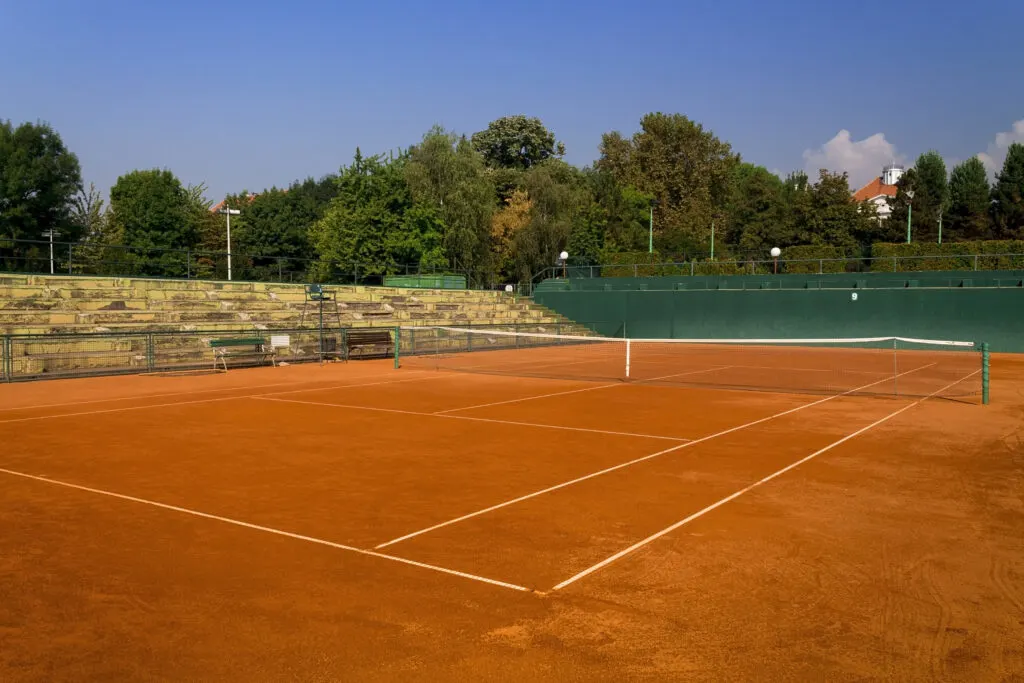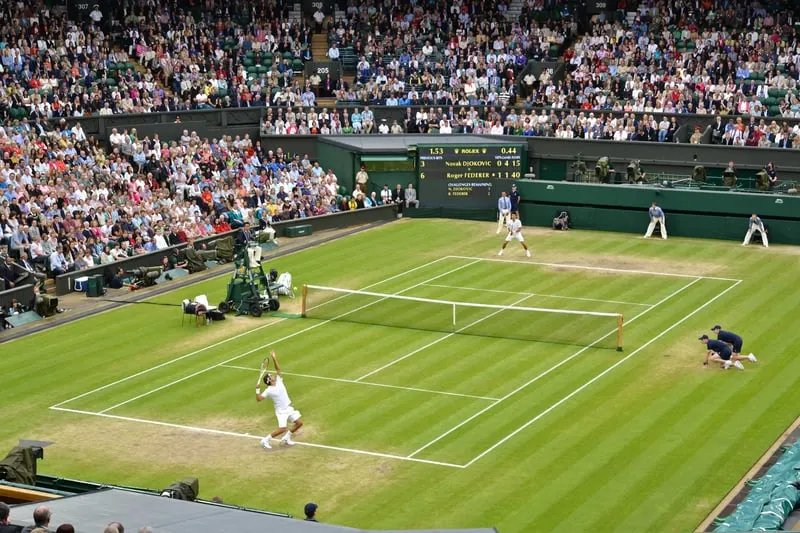
As the playing field for an enticing sport, tennis courts have a unique twist: their surface material greatly influences the dynamics of the game.
From the speed of the ball to the player’s strategy, every aspect can be impacted by whether you’re playing on grass, clay, or hard courts.
Here are the hardest surfaces to play tennis on (ranked from easiest to hardest).
3. Hard Courts

- Fast Game Speed: Hard courts can lead to a faster game speed compared to clay courts. This demands players to have quick reactions and adapt their playstyle to maintain control of their shots.
- Consistent but High Bounce: The ball often bounces consistently but at a height that can make shot placement difficult.
- Hard Impact: The solid, unyielding surface can be tough on the body, particularly on the joints. This means players need to manage their stamina and physical conditioning carefully.
Taking the spot as the least challenging are hard courts. These courts, made of a concrete or asphalt base topped with an acrylic surface, offer a reliable and predictable play.
The bounce is consistent, and the speed of the game is moderate, neither too fast as on grass nor too slow as on clay.
This doesn’t mean hard courts are without their challenges. They can be tough on the body, particularly on the joints. However, their predictable nature and the balance they offer between speed and bounce make them the easiest to adapt to for most players.
2. Clay Courts

- Slow Game Speed: The ball moves slower compared to grass and hard courts. This can lengthen rallies and favor players who excel in baseline exchanges, thereby making it tough for those who rely on quick points.
- High and Unpredictable Bounce: The ball tends to bounce higher and can often be irregular due to the loose surface, which can disrupt a player’s rhythm and timing.
- Surface Changes: The clay court surface can change during a match due to weather conditions or simply from play, which can alter the ball’s behavior and affect a player’s footing.
Depending on how you look at it, clay courts can be the easiest and the hardest surface to play tennis on. Characterized by a slower game pace and a high, frequently unpredictable bounce, these courts demand impeccable physical conditioning and a fine-tuned strategic mind.
While clay courts are easier on the body than grass courts due to their lower impact, they present their own challenges.
Weather conditions and play can change the surface texture mid-match, adding to the unpredictability. Hence, clay courts serve as a strategic playground where endurance and patience often trump power.
The slower game pace makes it somewhat easier for beginners, but at the highest level, it’s by far the most physically demanding surface – but not necessarily the hardest.
1. Grass Courts

- Fast Game Speed: The ball moves rapidly across the court. This requires players to react quickly and can favor those with a strong serve-and-volley game, making it challenging for players with a slower playstyle.
- Slippery Surface: Especially when wet, grass courts can be particularly slippery, demanding excellent footwork and balance from players. Slips and falls are not uncommon on this surface.
- Low and Inconsistent Bounce: Grass courts often lead to a low ball bounce, which can throw off timing. Additionally, wear and tear on the grass can result in an inconsistent bounce, making it harder for players to predict the ball’s trajectory.
Grass courts, with their emblematic lush greenery, secure the top spot as the most challenging surface to play on. Why, you may ask? The fast speed of the ball and its lower bounce height might seem advantageous to players with a powerful serve-and-volley game, but there’s more to the picture.
The slick nature of grass can make sudden changes in direction tricky. The player needs to be extremely agile to effectively change direction without losing footing. If you need 2 steps to change direction on a hard/clay court, you need at least 3-4 steps to change direction on a grass court.
Grass courts can also be notoriously slippery, particularly when moist. This requires players to have exceptional footwork and balance. It’s a delicate dance of power and precision that can make or break a game on grass.
